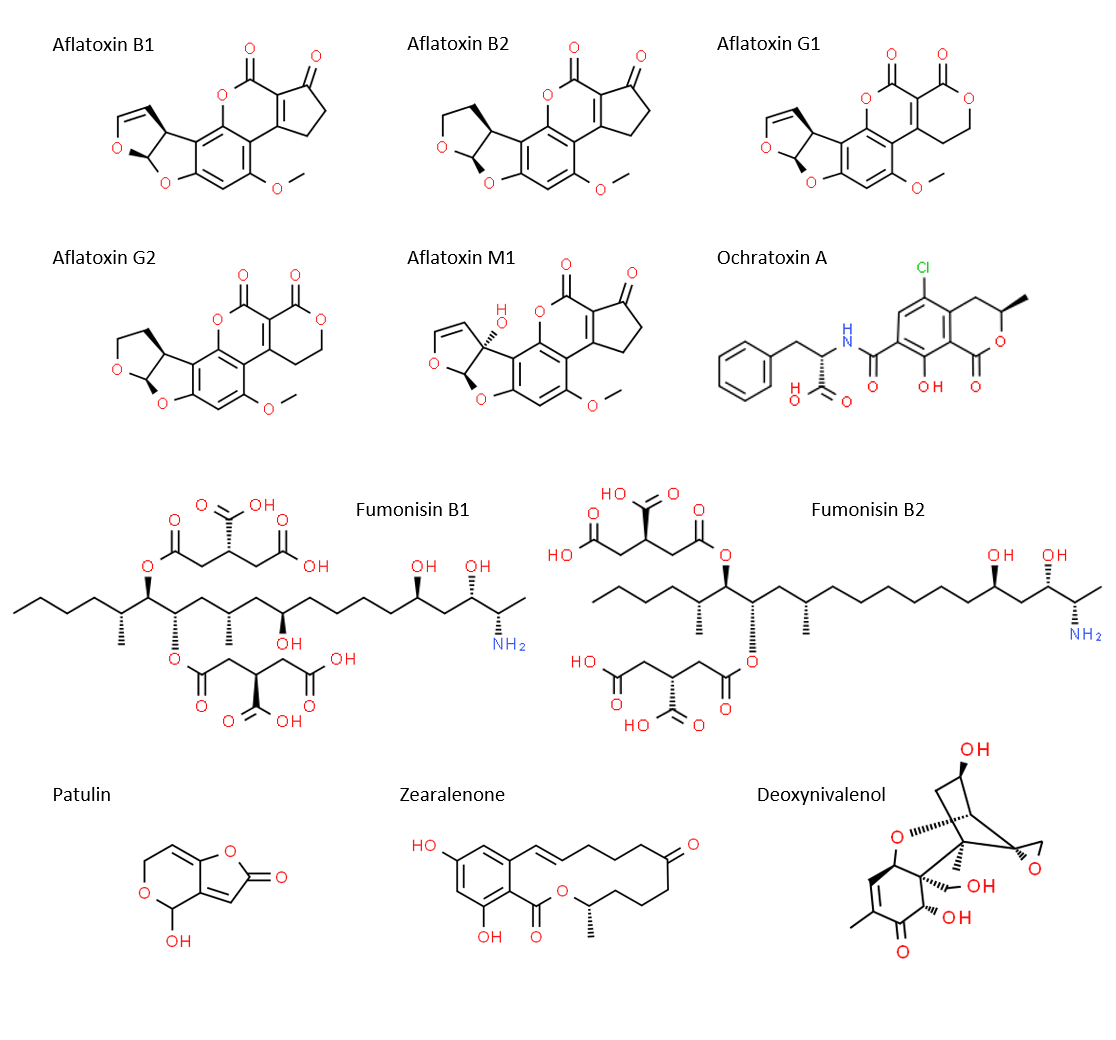
Mycotoxins are natural toxins defined as secondary metabolites produced by fungi species of Aspergillus, Fusarium and Penicillium. More than several hundred mycotoxins have been determined, but the major mycotoxins, which are commonly observed in food and have higher health concerns to humans and livestock, encompass aflatoxins, ochratoxin A, fumonisins, patulin, zearalenone and nivalenol/deoxynivalenol (Figure 1).

The following table summarizes major mycotoxins, their related fungi, commonly contaminated food, and their toxicity to humans and animals (1, 2).

Around 100 countries have regulated major mycotoxins using the established maximum limits in food and feed. This table is EU regulatory limits in foodstuffs (Commission Regulation (EC) No 1881/2006 of 19 December 2006 setting maximum levels for certain contaminants in foodstuffs).

Useful Links
- European Food Safety Authority (EFSA): Mycotoxin
- European Commission: Mycotoxin Legislation
References
- Mannaa M. and Kim K D. Mycobiology. 2017;45(4):240-254. doi:10.5941/MYCO.2017.45.4.240
- Alshannaq A and Yu J-H. International Journal of Environmental Research and Public Health. 2017;14(6):632-652. doi:10.3390/ijerph14060632